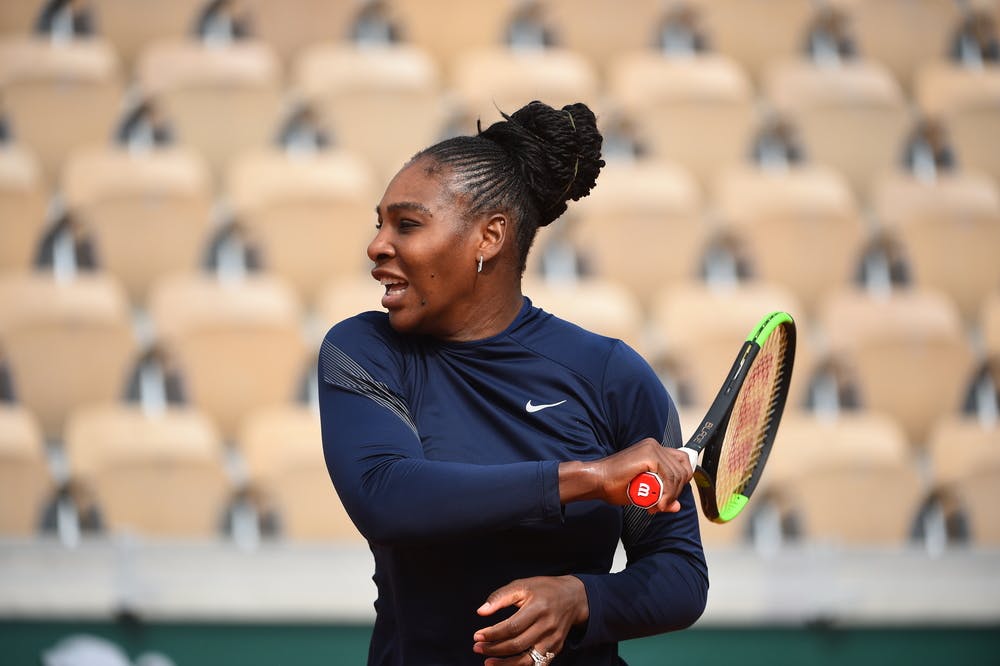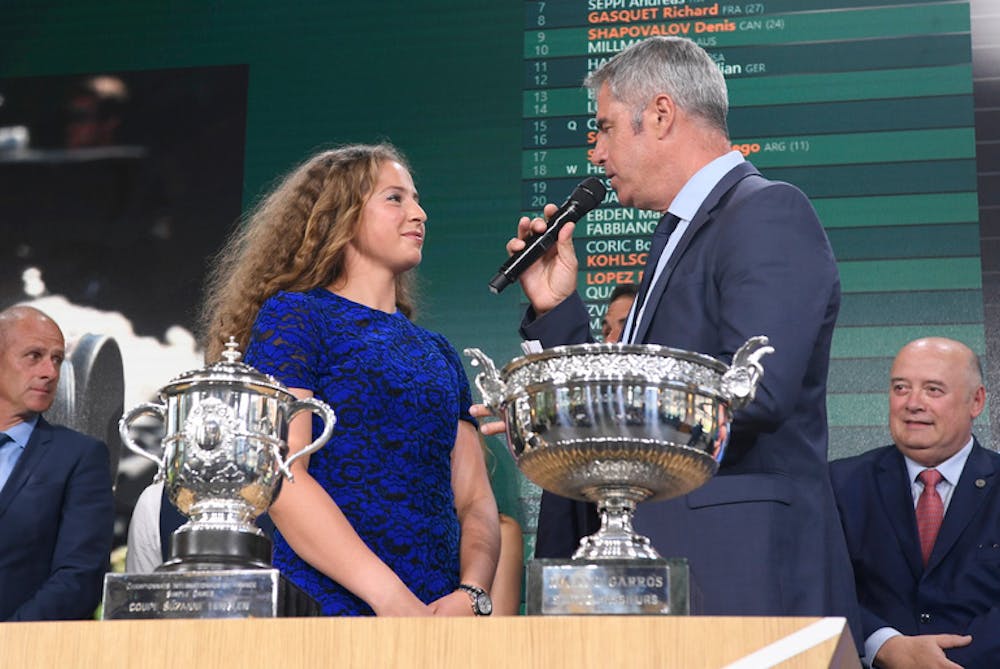Read more
Serena’s mission improbable

It's a stellar short-list of women who've won their first major title in Paris then successfully defended their crown.

Jelena Ostapenko is about to experience something that will occur just once in her career: her first Grand Slam title defence.
It is a unique challenge for those fortunate few who earn the privilege. The expectations of them have seldom been greater, their profile has never been higher, and – for most players – the pressure has never felt more intense.
But a successful defence, here at Roland-Garros? That is truly a rare feat.
Only three women in history claimed their first Grand Slam title on Court Philippe-Chatrier and returned to win a year later: Chris Evert (1974-75), Steffi Graf (1987-88), and Monica Seles (1990-91). On the women’s side, there have been just four successful maiden major defences in Ostapenko’s lifetime: Martina Hingis (1997-98), Jennifer Capriati (2001-02) and Victoria Azarenka (2012-13) at the Australian Open, and Venus Williams (2000-01) at Wimbledon.
Not that the 20-year-old is exhibiting any signs of this new pressure – at least, not any more. Ostapenko’s stunning performance in last year’s tournament, capped by her third-set fightback against Simona Halep in the final, landed the unseeded Latvian her first career title and propelled her to a new place in the tennis firmament. No longer a member of the chasing pack, she is now among the WTA Tour’s leading lights – with all the trappings and travails that come with such success.
“It's changed a lot off-court this season,” Ostapenko admitted in Rome. “At the beginning of the year, it was very tough for me to start the year because I was the favorite in almost all the matches. But now I’ve got used to that.
“And after playing the final in Miami, I think I'm doing much better. I'm still not thinking about that I have to defend a title. I'm just thinking to go there and have, like, two great weeks and just to enjoy the time there.”
That may sound like a familiar refrain. Angelique Kerber and Garbine Muguruza expressed similar sentiments ahead of their returns to the Australian and French Open respectively following their 2016 breakthroughs. Both were eliminated in the fourth round a year later.
But from Ostapenko, the mentality is in keeping with her game. Like many in her generation she has, in the words of her Australian coach David Taylor, “Absolutely no respect for anyone in terms of tennis ability.
“People used to be scared and now that’s completely gone,” Taylor told Sport 360’s Reem Abulleil in Rome. “It’s a striking difference in the generation. They walk on, they really believe they can beat top-10 players, and that’s the biggest change and they’re going to come out swinging.”
Few swing as freely as Ostapenko, who recently added boxing to a training repertoire that already includes ballroom dancing and yoga. And the results speak for themselves: she reached her second Grand Slam quarter-final at Wimbledon before making her top-10 debut after the US Open, won her second career title in Seoul, and cracked the top five after Indian Wells earlier this season, shortly before reaching the final in Miami.
Still, nothing yet eclipses last year’s run in Paris. More than the calibre of opponents she beat en route to her Roland-Garros triumph a year ago, it was the manner in which she dispatched Sam Stosur, Caroline Wozniacki, Timea Bacsinszky and Halep, sticking to her freewheeling front-foot style even as the stakes got higher.
“I told myself, you're in a Grand Slam final, and you may never have another one the rest of your life,” Ostapenko told l’Equipe. “Try to hit every ball as hard as you can. If it goes in, it goes in. If it goes out, it goes out.”
This year, the Latvian opens against Kateryna Kozlova before a potential second-round blockbuster against Victoria Azarenka. A 3-3 record on clay heading into Roland-Garros 2018 is far from ideal, but Ostapenko sees no need to worry – particularly given the seldom-considered variety of terre battue the players encounter before heading to Stade Roland-Garros.
“[It] depends which clay because clay can be very different. It can be fast. It can be very, very slow. The one that is very slow I, of course, didn't like because the rallies were so long and it was very hard to hit winners.
“But now I think clay got much better. And especially at the French Open, it's very fast. And I think it fits my game pretty well.”
Fast, just the way she likes to play. Could she stun the field once more, and make it a maiden double?